From Cape Town to Johannesburg: An Artistic Journey into the Soul of South Africa
With a vibrant and diverse artistic scene, a stroll through the trendy neighborhoods of Cape Town and Johannesburg offers a fresh perspective on the country and its youthful spirit. Let’s take a guided tour through the country’s artistic landscape.
The journey begins with a coffee at Pauline’s on Somerset Road, in the Waterkant district of Cape Town, a starting point that reveals Cape Town’s vibrant energy. This quaint square, shaded by large trees and flanked by colonnades, is home to the famed Goodman Gallery, a must-visit for art lovers. A fist not-to-be-missed stop after a long overnight flight, which already seems to promise the first taste of a much richer journey.
Young artists are doing well in auctions and gaining international exposure, like Igshaan Adams and Mary Sibande
Larelize van Zyl, CEO of Aspire Art
Right across the street is Aspire Art, South Africa’s leading auction house for modern and contemporary African art. The works on display highlight the flourishing local art scene. It is immediately clear that the artistic scene is flourishing. According to Larelize van Zyl, Aspire Art CEO, "Young artists are doing well in auctions and gaining international exposure, like Igshaan Adams and Mary Sibande." Alongside big names like William Kentridge and Zanele Muholi, a new generation of artists is eager to showcase their talent globally. Waterkant, once a neighborhood of enslaved people, and adjacent to the vibrant Muslim quarter of Bo-Kaap, is now filled with boutiques and restaurants reminiscent of California or the Mediterranean..
Spaces for Artistic Freedom
The South African artistic scene is strong and dynamic at the moment. These places are useful when it comes to closing the gap between artists and audience
One of the foundation’s managers
To truly understand the emergence of this new artistic community, there are key places to visit in Cape Town. A4 Arts Foundation, located on Buitenkant Street near the Castle of Good Hope, is one such venue. Founded in 2017 by South African philanthropist Wendy Fisher, A4 serves as a creative laboratory and offers workspaces for artists, schools, and the public. A library and open spaces encourage interaction between visitors and the artistic process. Photographers, writers, plastic artists and curators work alongside each other.
According to one of the foundation’s leaders, “There aren’t enough spaces like this in South Africa, where artists can experiment freely. The next exhibition for instance will be focused on urbanism and A.I. in South Africa. We offer a space to discuss such issues. It’s not just about exhibitions; people are free to talk about their projects. Students can register and work here, use free Wi-Fi and study in the library. The South African artistic scene is strong and dynamic at the moment. These places are useful when it comes to closing the gap between artists and audience.”
Artistic Studios Reflect South Africa’s Soul
I work with all materials—clay, wood, glass, marble—anything that relates to the story I want to tell and amplify
Zizipho Poswa, southafrican artist
In Woodstock, an area likened to New York’s Meatpacking District, gentrification has transformed this former textile hub into a hotspot for contemporary art galleries and studios. It’s here that internationally acclaimed artists Zizipho Poswa and Andile Dyalvane create their works. Both alumni of Nelson Mandela University, their giant hand-sculpted ceramics are now part of collections at the Metropolitan Museum of Art, the Los Angeles County Museum of Art, and the Philadelphia Museum of Art.
In the middle of our studio, there is a secret space where we connect with our ancestors, where we ground ourselves, and where ideas can emerge
Zizipho Poswa, southafrican artist
Both artists have been recognized by luxury brand Loewe, and were commissioned to create artworks for “LOEWE Lamps” at Salone del Mobile in 2024. In their creation space, many different art forms evolve. Zizipho explains her creative process: “I work with all materials—clay, wood, glass, marble—anything that relates to the story I want to tell and amplify. In the middle of our studio, there is a secret space where we connect with our ancestors, where we ground ourselves, and where ideas can emerge. I never create without that connection, without having visions. They appear in different forms, and we translate them into works. This is part of our culture. I know that Europeans and Americans can understand this. No matter what story you're telling, people relate to it and connect."
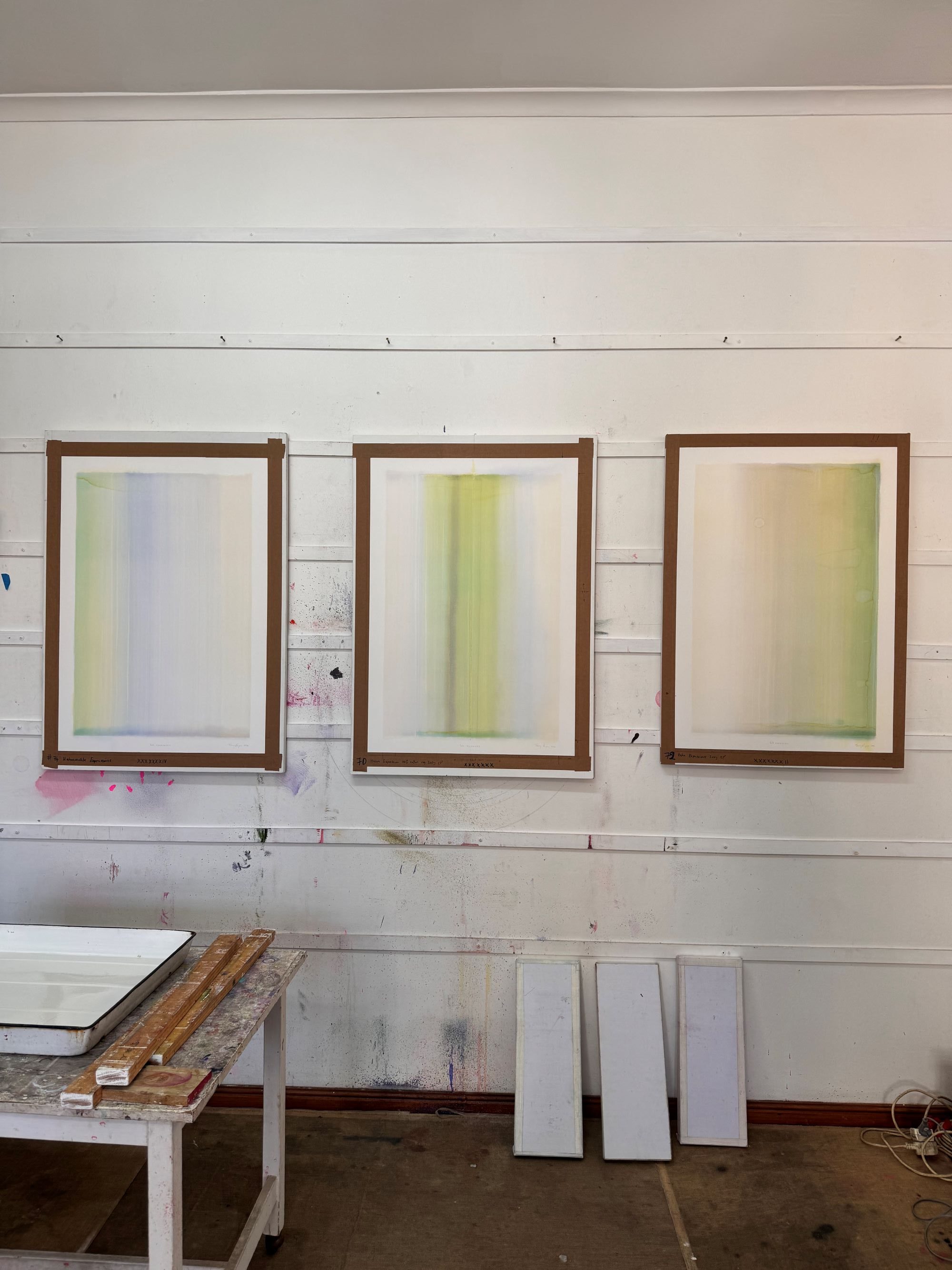
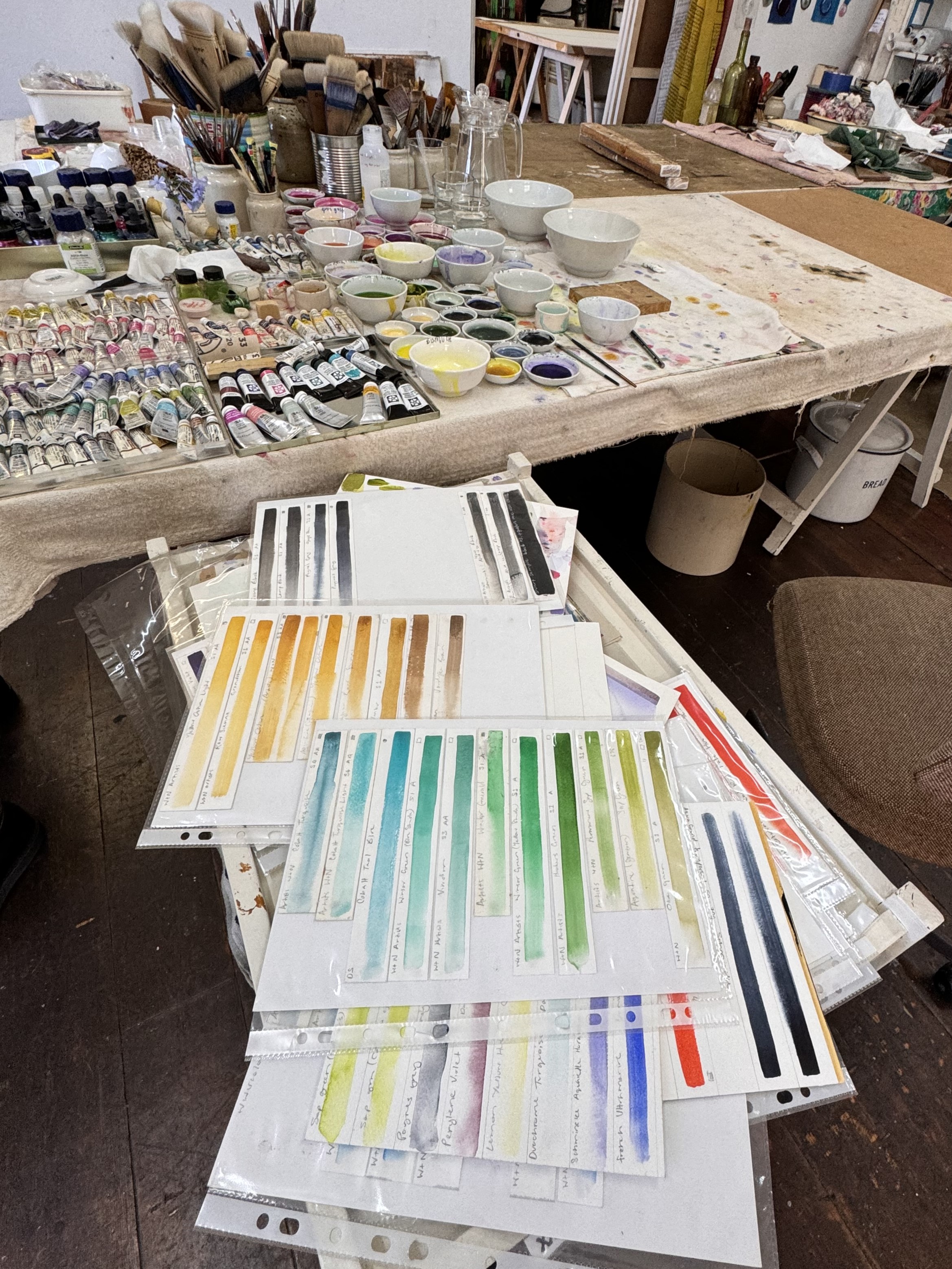
Nearby, artist Tracy Payne offers a different perspective with her abstract watercolors and oils. She meets few people and paints alone. Reflecting on her work, one can perceive her journey towards inner peace through peace for South Africa.
Today, I seek simplicity, minimalism, because I come from a world of noise and violence, that of South Africa. I carry that history like a soul
Tracy Payne, southafrican artist
She says, “I paint works like meditations. Some pieces come effortlessly; others are a struggle. My art brings me peace. It's a lifetime that has led me to this point, and when a work flows miraculously, I get very excited—that lightness is what everyone is searching for. In the past, I worked while struggling, confronting the surrounding issues, but I'm no longer there. Even though the struggle continues, I am now in the background. I wanted something simple, and the ‘veils’ (editor’s note: watercolors veiled by tissue paper) are part of that. The paper represents truth, purity, and essential light. Today, I seek simplicity, minimalism, because I come from a world of noise and violence, that of South Africa. I carry that history like a soul." She tells, without bitterness, the difficulty of being a white artist in the country today, especially as someone producing abstract art. "It's not in tune with the times. South African artists from the black community are currently expressing themselves through hyperrealism, seeking to showcase their identity—a completely normal process. Today, it’s their time to be in the spotlight."
A visit to Southern Guild, a premier gallery in Cape Town’s Waterfront district, is essential. All the artists we’ve met say they artistic expansion happened for the most part thanks to this gallery. Its stunning spaces host monumental works, such as the solo exhibition Vigil by South African artist Justine Mahoney. Works created by two mediums—painting and ceramics—that converse with one another, revealing a new artistic rebirth for Justine Mahoney experienced during Covid. Masterful. Further along, the furniture by designer-star artist Rich Mnisi, entwined with snakes, his favorite animal, is striking.
In a completely different setting, the idea of continuing this connection to South Africa through a selection of artworks can only take place at the Mount Nelson, a historic hotel in Cape Town, a verdant oasis with very Victorian elegance. Today, it is fully renovated and part of the luxury hotel chain Belmond (LVMH). Built in 1899 on the foundations of an old farm with lush vegetation, the hotel, which housed the British army during the Second Boer War, welcomed figures such as young Winston Churchill, Edward VII, Sir Arthur Conan Doyle, and John Lennon. It offers custom-made art tours in the city and a curated selection of artworks in the palace's lounges and gardens. During our visit, Buren’s columns adorned the perimeter of the lower terrace's pool.
Continuing with a visit to the monumental Zeitz MOCAA is a journey in itself. Built in Cape Town's former grain silos, this retro-futuristic building of glass and concrete invites visitors to immerse themselves floor by floor in a striking variety of works. The solo exhibition of artist Mame-Diarra Niang, titled Self as a Forgotten Monument, is masterful. Each piece, deliberately blurred, invites introspection, reminding us that we are in constant metamorphosis. It also offers a reflection on Africa’s transformation, as witnessed through the artist’s works.
From the city of Cape Town, one retains its hyper-trendy vibe, its relaxed lifestyle akin to the Californian way of life, its neighborhoods celebrating diversity and the Rainbow Nation, and its cutting-edge art galleries, like Whatiftheworld on Buiten Street. This gallery presents a very interesting selection of artists, ranging from Athi-Patra Ruga to Sthenjwa Luthulu, from Maja Marx to Alka Dass, and many others.
Johannesburg, the soul of South Africa
Delving into South Africa’s art scene also involves exploring what Johannesburg, the other great metropolis, has to offer.
To get into the spirit of the city, you first have to take a step back. Look at Johannesburg’s history through that of Gandhi. Yes, the Mahatma lived here. More than just a memorial, his house is now a hotel-museum with seven rooms, where staying imbues your journey with an extra layer of soul. In the living room, photographs and quotes depict the struggles led by the architect Kallenbach and Gandhi. It was in this place that the two friends laid the foundations of an ideal, that of a non-violent and egalitarian society—Satyagraha, the "force of truth" in Sanskrit. This philosophy would go on to shape not only India’s destiny but also that of South Africa through Nelson Mandela. The house, built in 1907 and owned by the French company Voyageurs du Monde since 2009, has been tastefully and meticulously restored. The bungalows scattered throughout the garden are ideal for quiet contemplation. Located in the residential neighborhood of Orchards, it’s a great starting point for exploring Johannesburg's many attractions.
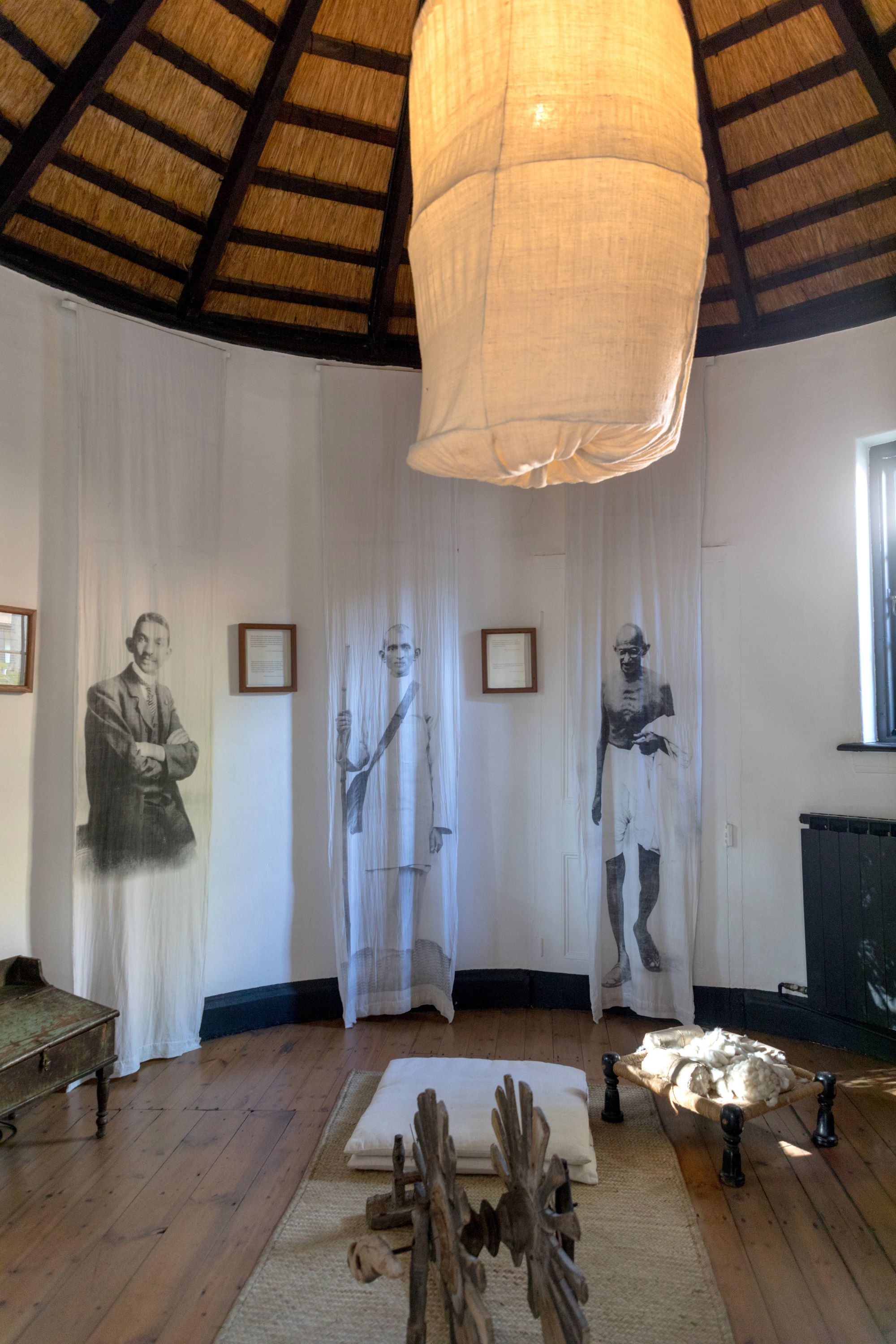
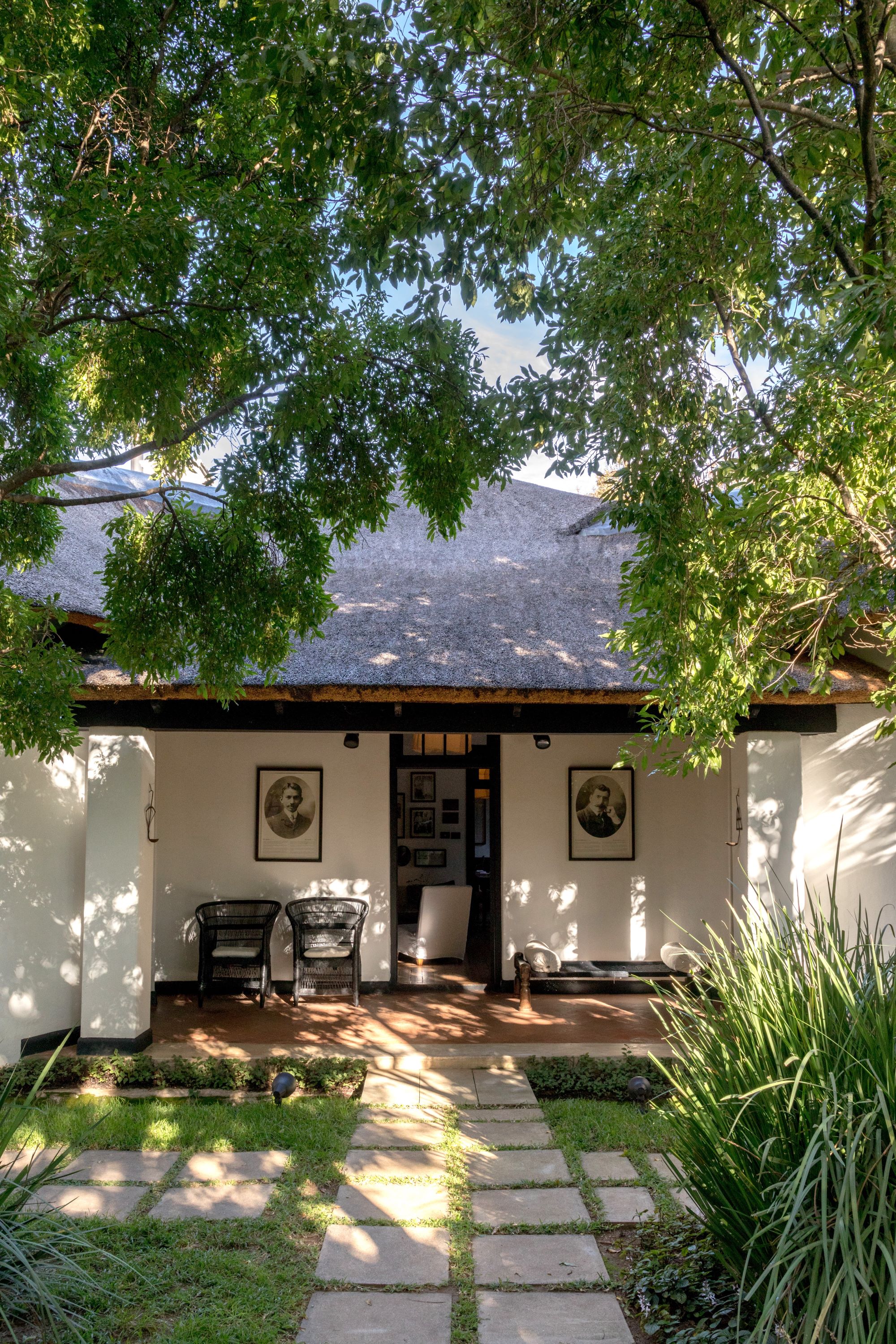
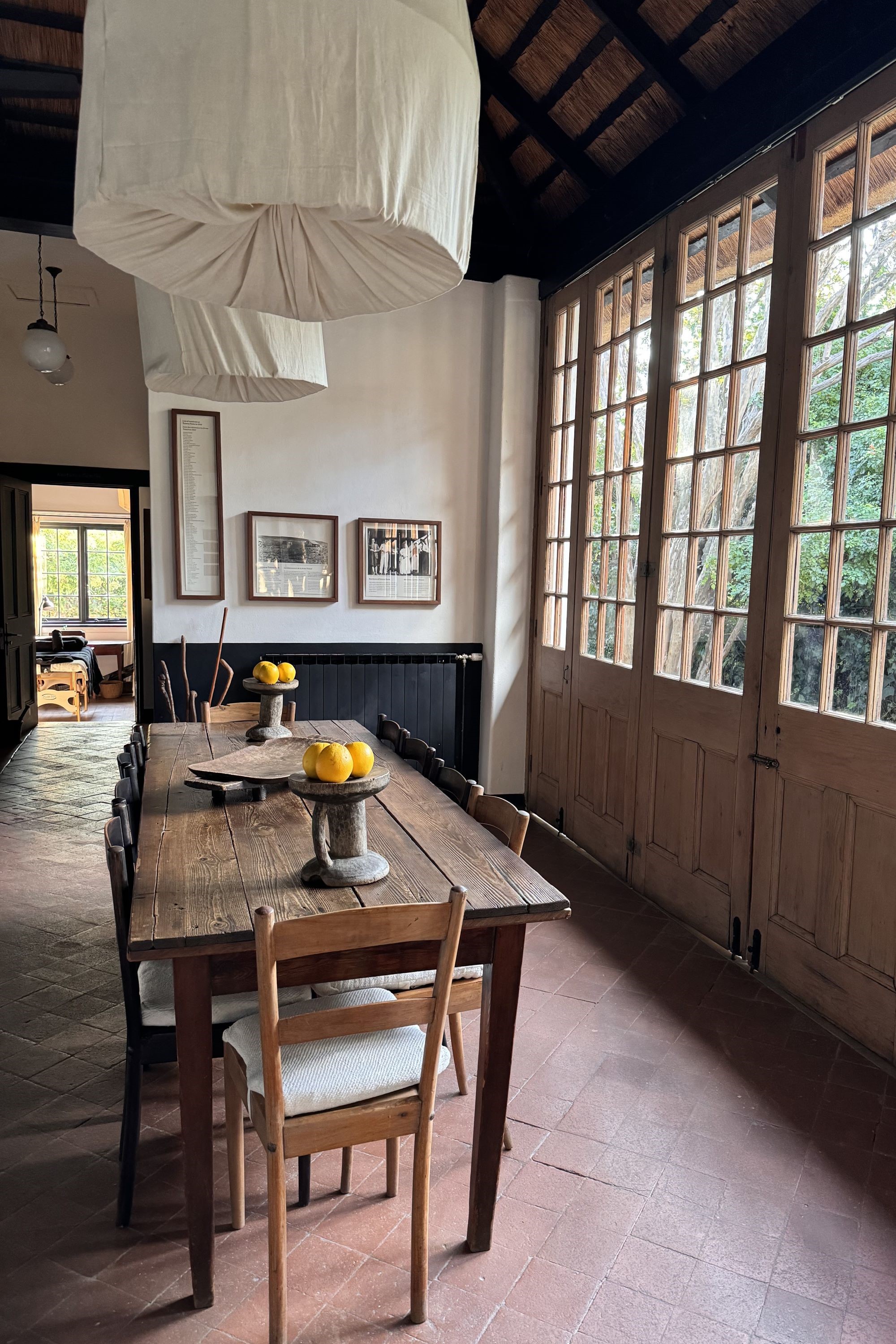
A visit to Everard Read is a must. Africa’s oldest art gallery, founded in 1913 and now housed in the stunning CIRCA architectural and artistic complex, it helps you understand the prominent place African contemporary art holds on the international scene. One of the gallery's curators explains: "Contemporary African art is growing exponentially and rapidly. In the digital age, people have access to information. Our stories are interconnected with other political, social, and economic narratives around the world. African contemporary art is increasingly understood, so we have much to offer the world."
Next, one must treat oneself to an artistic breath of fresh air with the NIROX foundation, a communion between art, space, and the living world. Just 45 minutes from Johannesburg’s center, this outdoor collection offers around fifty permanent installations along the banks of the Blaauwbankspruit River, near the private Kkatlhamphi nature reserve, as well as temporary works. The site, which also serves as an artist residency, is a vibrant hub of artistic life.
Without a doubt, African contemporary art is experiencing an exceptional revival, despite the economic difficulties facing the South African population since Covid. Exploring the streets and galleries of Cape Town or Johannesburg ensures an understanding that the global new artistic wave must now include artists from the African continent.
This travel journal was made possible with the support of the travel agency Voyageurs du Monde, their "like a friend" specialists who guided us on-site and the airlines Swiss and Edelweiss.
Voyageurs du Monde offers a wide range of itineraries in South Africa departing from Geneva or Zurich, adaptable at will for tailor-made trips to suit the season, your tastes and your budget.
Our specialist advisers will design an ultra-personalised trip, and a concierge service at your destination will respond to all your requests. Ideal for modifying your stay at any time and travelling well accompanied, taking advantage of top-of-the-range services (travel diary application, local mobile, nomad Wi-Fi, 24-hour assistance, good addresses, priority passage at airports, etc.).
Voyageurs du Monde in Geneva (rue de la Rôtisserie 19) and Lausanne (rue de Bourg 6), opening in Zurich in 2025.
Partager l'article
Continuez votre lecture
Africa’s new designer scene redefines handcraft luxury
In the ever-evolving landscape of global fashion, Africa as a continent, has grown to be a dynamic hub of luxury and creativity. Bustling countries like Nigeria, South Africa, Ghana and Egypt, and manufacturing powerhouses like Mozambique, Côte d’Ivoire, and Ethiopia, have birthed a new wave of fashion designers.
By Elvis Kachi
Africa: the ever-growing interests of big luxury groups (Part.1)
While Western powers covet the energy wealth of the African continent, what are the interests of big luxury groups in its precious raw materials? Luxury Tribune launches a series of articles dedicated to the luxury sector’s development in Africa.
By Eva Morletto
Newsletters
Cet article vous plaît ?
Inscrivez-vous à nos newsletters pour recevoir les dernières publications et analyses selon nos 4 thématiques: